Throwback Thursday - Varanasi, March 31st - April 1st, 2018
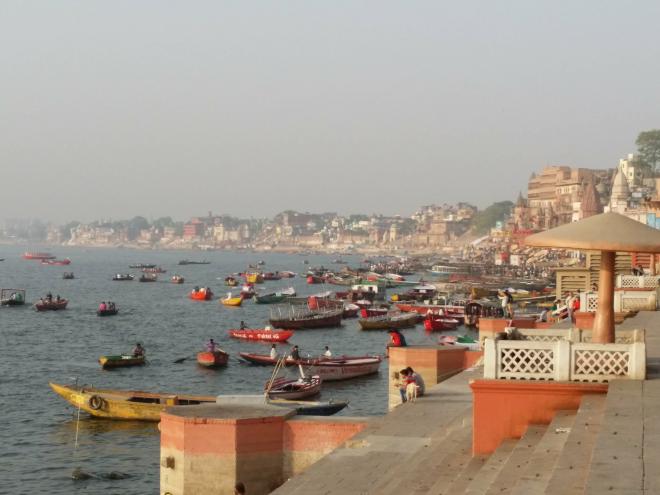
Table of Contents
Many years ago, when my time living in Istanbul came to a close, I took a few months to travel around India. It’s hard to describe what it’s like traveling in such a huge, complex country; whole libraries have been written on the topic for hundreds or even thousands of years, and more books and blogs are being published on it every day. Rest assured, it’s the fullest experience you’ll ever have traveling: astounding, frustrating, hilarious, obnoxious, funny, tedious.
One thing you don’t appreciate about India just from looking at it on a map is just how big it is. For example, I spent two months in Spain and felt like I saw just about everything I wanted to see. I had the run of India for about the same time and I didn’t even see a quarter of what I came for. I could probably stay there a whole year and not get my fill. Maybe one day I’ll go back and visit Ladakh, Amritsar, Kerala, and all those other places that loom large in my reading. I’m not in any hurry, though. I feel like I’m still overwhelmed from the my first trip over five years ago.
It’s hard to say what was the most captivating experience in a trip full of marvels, but Varanasi has to be among them. Situated on the holiest banks of the holiest river Ganges, this holiest of Hindu cities draws in the faithful and the curious from all over the world. It’s considered a blessing to die and be cremated there, so the elderly flock to the city in their final days. When you see the airline stewardesses wheel an old man onto the plane, you can’t help but wonder if this his final one way ticket.
The Ghats #
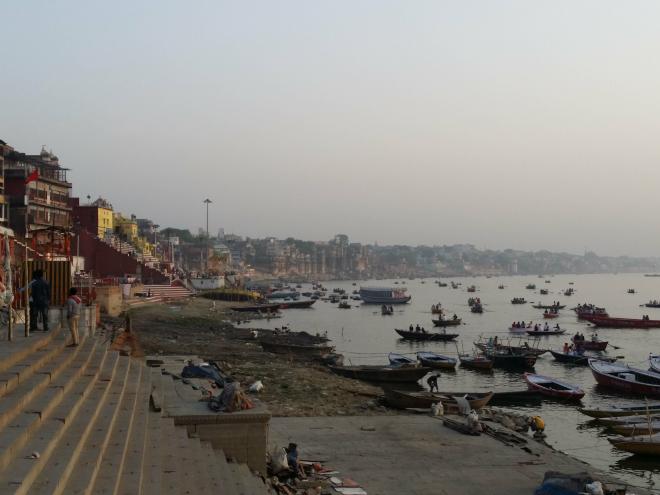
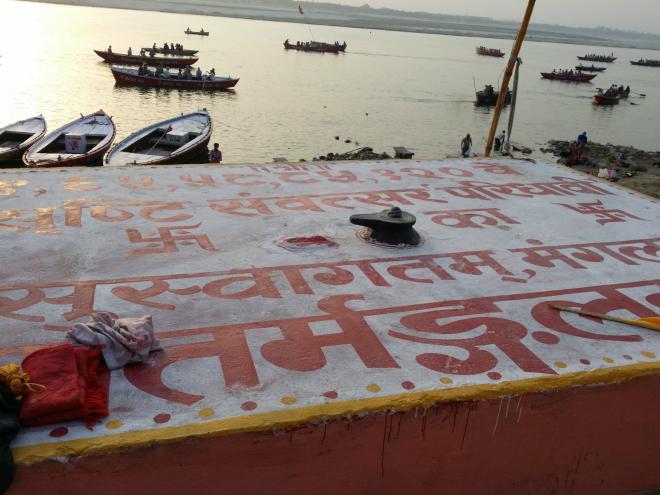
 Along the way, I found followers of various sects beginning their day the best possible way each one knew how. A lot has been written about the great religiosity and variety of faiths in India, but it’s hard to put it across unless you’ve been there. Words like “Hinduism” lead foreigners like me to imagine something that’s more coherent and standardized than what actually exists. You could have two families living next door to each other who are both nominally “Hindus” but carry out their lives and profess worldviews that seem completely at odds with each other. Likewise, here on the ghats one group might greet the dawning sun with obscure schools of Yoga, while ten meters away, a group of nuns chants in a rickety lookout tower. A sanyasa ascetic kneels over and over again toward the river as a Dalit woman sweeps the stairs with that scritch scritch reed broom sound I’d heard every morning in every Indian city.
Along the way, I found followers of various sects beginning their day the best possible way each one knew how. A lot has been written about the great religiosity and variety of faiths in India, but it’s hard to put it across unless you’ve been there. Words like “Hinduism” lead foreigners like me to imagine something that’s more coherent and standardized than what actually exists. You could have two families living next door to each other who are both nominally “Hindus” but carry out their lives and profess worldviews that seem completely at odds with each other. Likewise, here on the ghats one group might greet the dawning sun with obscure schools of Yoga, while ten meters away, a group of nuns chants in a rickety lookout tower. A sanyasa ascetic kneels over and over again toward the river as a Dalit woman sweeps the stairs with that scritch scritch reed broom sound I’d heard every morning in every Indian city.


 The architecture was superb, of course. The buildings and infrastructure brought an utterly unique vibe to the ghats, a strange combination of opulence and shabbiness. These old, beautiful buildings aren't just maintained for the benefit of gawking tourists. They've been in use for centuries and probably remain so for at least a few centuries more.
The architecture was superb, of course. The buildings and infrastructure brought an utterly unique vibe to the ghats, a strange combination of opulence and shabbiness. These old, beautiful buildings aren't just maintained for the benefit of gawking tourists. They've been in use for centuries and probably remain so for at least a few centuries more.
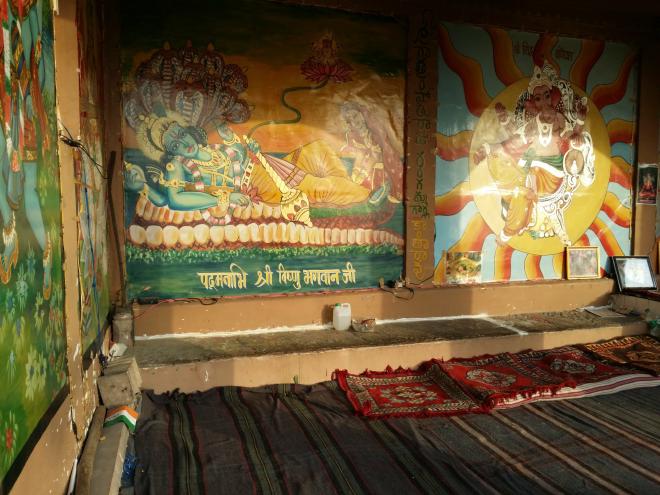
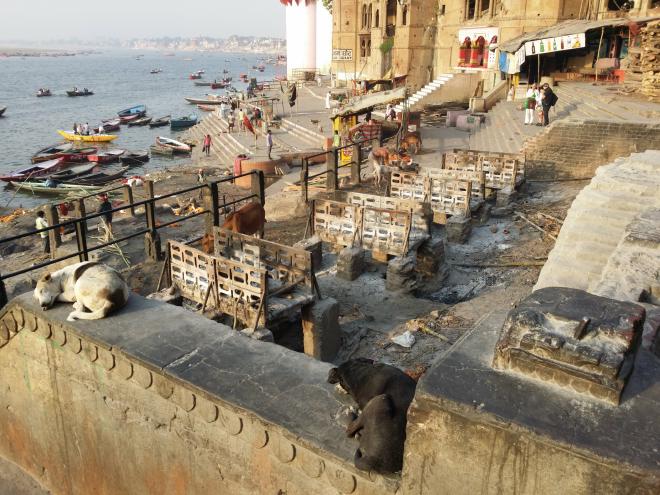
Only a few ghats are specifically designated for cremation, and even those are divided up. Those pictured above are for the more “common” of the deceased. Other cremation ghats are set aside for those wealthy enough to pay for the privilege of hosting your cremation in a place of great prominence.
It was at one of the latter ghats that I joined a crowd to witness a cremation from a distance. To be respectful, I obviously didn’t take a picture during the event. It wasn’t particularly gruesome from where I was standing, but the experience is enough to get anyone thinking about mortality and their own place in the universe.
The Ceremony #
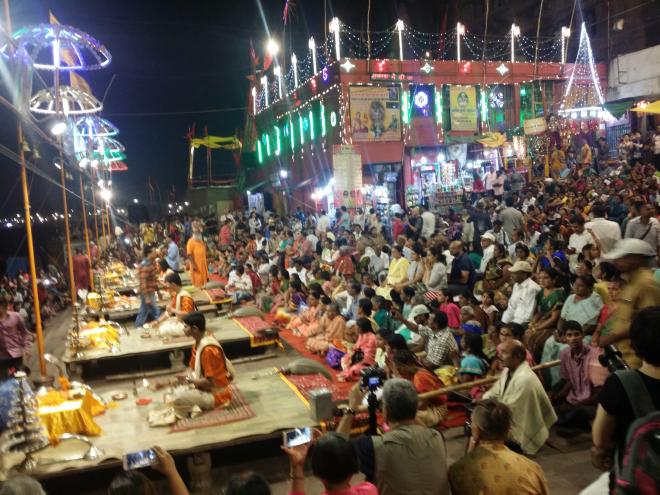
Every night, locals conduct an aarti honoring the Ganges. An aarti is a Hindu ceremony that uses the light of a flame for worship. Hundreds attend every night to watch.
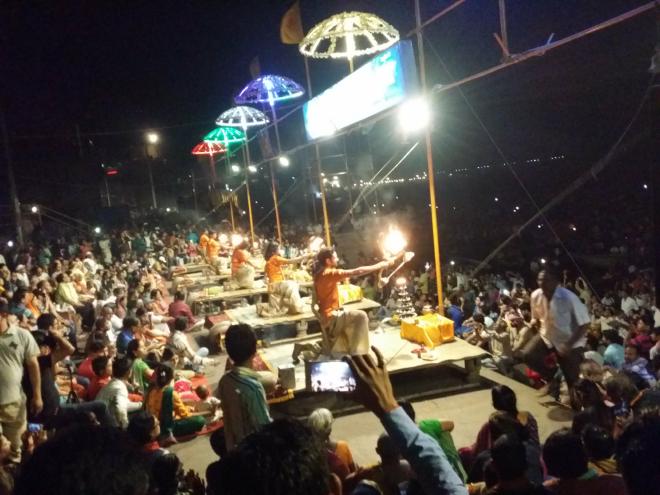
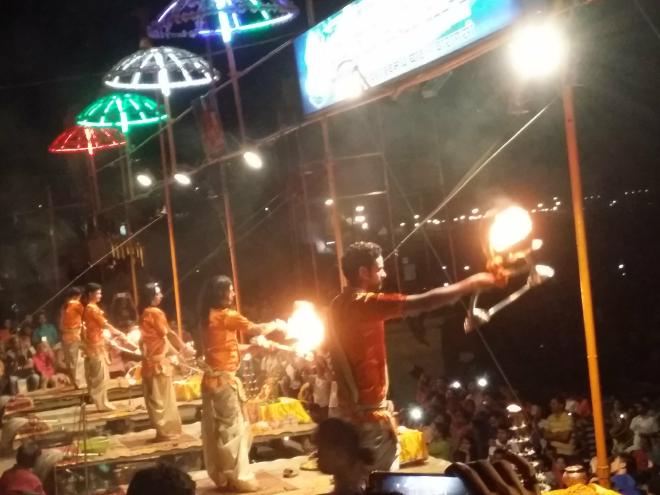
One thing to know before going is just how loud it is. Scores of bells clang almost nonstop for the better part of an hour.
The Concert #
After the ceremony, I walked through the twisting backstreets of the ancient city to find a concert I’d seen advertised elsewhere. I’m an enthusiast of Indian classical music and it would be a shame to leave the country without having seen at least one performance. The streets can be a real maze and I was blocked by at least one cow, but I finally arrived just in time to catch the concert.
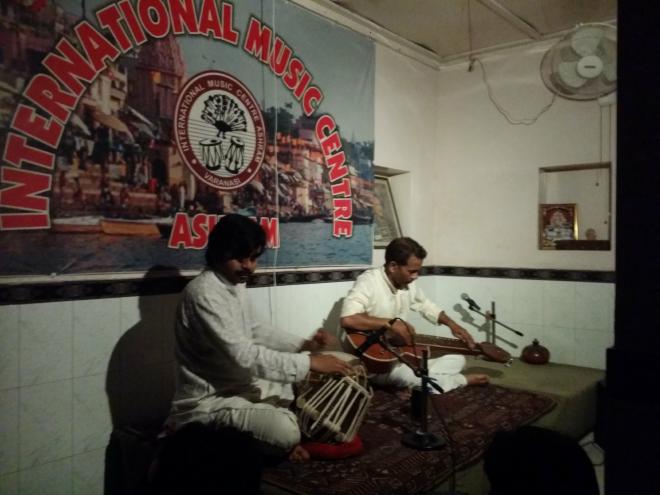

The first performer played a kind of slide guitar called Siddha Vina. The second performer played santoor, a kind of hammered dulcimer that can also be found in the Middle East. The performance was stellar, of course, and definitely reached my expectations. I only regret that I wasn’t able to see more concerts like this.
I couldn’t find a video of the performance, but here’s one of the santoor player from 2014:
The Stupa #
The next day, a long, bumpy taxi ride took me outside of the city to Sarnath. One of the four main pilgrimage sites in Buddhism, this spot commemorates the place where Buddha first preached his sermon after enlightenment and established his first monastic order. On the exact spot, the enormous Dhamek Stupa was built sometime in the 5th or 6th centuries during the Gupta era.

After the decline of Buddhism in India in the 12th century, the site fell into disrepair. Muslim invaders destroyed much of the complex, and many of its bricks and stones were later hauled back to Varanasi to build the ghats. It was only rediscovered in the 18th and 19th centuries, after which began excavations. Buddhism still hasn’t recovered in India, but Sarnath has regained its status as an important pilgrimage site for Buddhists all over the world. The temple pictured below is a newer building, constructed with funds from foreign benefactors seeking to rebuild Buddhism in the land where it was first founded.
